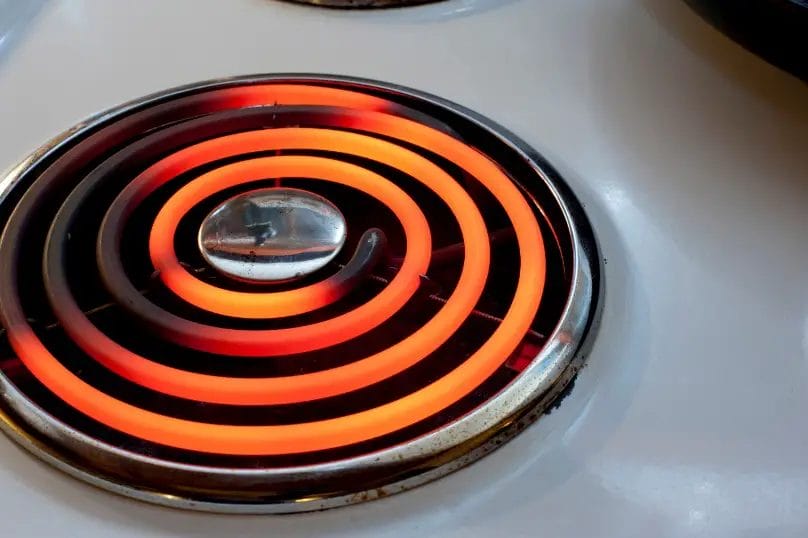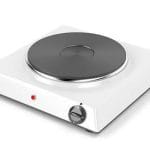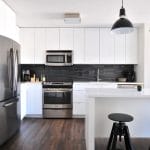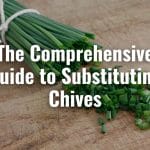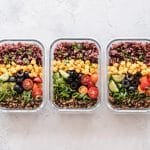The hotplate is a relatively new addition to the list of kitchen appliances. Unlike a gas stove, a hotplate uses electricity, requires minimal space, and is portable. It is energy efficient and also cooks food quickly, thus saving time. However, there are a few things to consider when using a hotplate. Moreover, to maintain a hotplate, it needs regular cleaning. In the following paragraphs, we will look at some tips to use and maintain a hotplate.
Tips to Safely Use a Hotplate
Pan’s Heating Side Should Be Dry
One of the primary reasons why most hotplates don’t last long is because people use wet pans. Therefore, it is better to make sure the heating side of the pan and the hotplate are dry before using it.
Use the Right Gloves
Just like with any other heating kitchen appliance, it is important to wear the right gloves when using a hotplate. Heat-resistant gloves are affordable and also readily available in the marketplace.
Set the Right Temperature
Although hotplates have temperature controls, it is essential to be very clear about your temperature settings. For example, the temperature should be high when heating the pans. On the flip side, the temperature should be low when deep-frying certain food items. Using the appropriate temperature ensures safety, helps save energy, and ensures that the food is prepared well.
Keep Flammable Objects at Bay
It is the golden rule of any kitchen to keep flammable products away from the cooking area. The same basic principle applies to hotplates. To identify the flammable products, check out the description and labels on their packaging. Make sure to keep petroleum products and aerosol cans away from the hotplate while it’s working.
When Cooking
Heat the Plate
Before cooking, make sure to heat the plate for a few minutes. After it is heated, place the cooking pan on it, and allow it to heat up. Make sure the temperature of the plate is higher than that of an average cooking temperature.
Add Food to the Pan
After the pan is perfectly heated, put food on it. However, once you have put food on the pan, lower the temperature of the hotplate. There are two reasons to lower the temperature. First of all, it saves electricity, and secondly, it helps ensure the food isn’t overcooked or undercooked. Lowering the temperature is important, especially when cooking meat. Cooking meat at low temperatures makes it nice and tender.
Turn the Plate Off
After the food is cooked, turn the hotplate off. When removing the food from the plate, make sure to keep heat-resistant gloves on. Before moving the hotplate from its place, allow it some time to cool down. The good news in, unlike induction cooktops, with hotplates you can use any cookware, whether it is made of aluminum, steel, cast iron, glass or ceramic.

Cleaning a Hotplate
Let’s look at ways to clean the various components of a hotplate.
The Coil Burner
- In some hotplates, there is a coil burner instead of a metal or a ceramic plate. This coil can get food crumbs or cooking oil. The coil burner should be cleaned immediately to prevent unpleasant smoke and smell. You can clean the coil burner using dishwashing soap or some baking soda.
- If you want to clean the coil burner, give it 15-20 minutes to cool down after plugging it off.
- After it has cooled down, remove it from the hotplate. Most hotplates are fitted with a simple unplugging system. However, it is better to read the instruction manual before removing the coil burner.
- Dampen a piece of cloth in a mixture of soap and water. Clear away the food residues from the burner coil using this damp rag. If the soap and water mixture fails to clean the burner coil, apply some baking soda paste, and let it sit there for a few minutes.
- If your hotplate has a drip pan, it should be cleaned as well. Drip pans are made of stainless steel. You can rise them with water and soap and then wipe them dry.
- Before placing the coil burner and the drip pan back onto the hotplate, allow them some time to dry. Electrical components should never be exposed to water.
Cast Iron Burner
- You will need latex gloves, a bucket, some lukewarm water, a scraper, a cleaning sponge, a dry cloth, and some kitchen cleaning fluid.
- After it has cooled down, use a scraper to remove the burnt food residues.
- Afterwards, apply some kitchen cleaning fluid onto the cast iron burner. Now rub it all over the burner with a sponge.
- After cleaning it with a sponge, wash it thoroughly with lukewarm water.
- Allow the cast iron burner to dry before using it again.
- Repeat the process periodically to maintain your burner.
Glass Top Plates
- To clean the glass surface, you can either use distilled vinegar or lukewarm water. If you use any cleaners, make sure they are mild since the surface is very sensitive.
- The cleaning tools should be soft and gentle, such as sponges, soft brushes or soft cloths.
- Repeat the process periodically, and before using the glass top, let it dry.
Ceramic Cooktop
- You will need baking soda, soapy water, white vinegar and a damp cloth.
- Before cleaning, allow the top to cool down. Then sprinkle baking soda over it.
- For tough stains, you can spray a mixture of baking soda and white vinegar.
- Rub the surface using a dishcloth or a soft sponge.
- The dishcloth should be drenched in warm soapy water.
- Lastly, use a damp towel to wipe the entire surface.
Rusty or Burnt Hotplates
- Pre-clean the surface with a damp cloth.
- Mix two tablespoons of baking soda in a cup of vinegar and mix well.
- Apply the mixture to burnt areas, and rub them with a soft sponge or brush.
- You can also use a rust-cleaning fluid. These fluids are affordable and readily available in the market.
The Final Word
To keep your hotplate in top shape, make sure to follow the usage and cleaning tips mentioned in the paragraphs above. The best way to ensure the longevity of your hotplate is by keeping it clean and free from food or oily residues. A dirty hotplate smells bad, takes longer to cook food, and also consumes more energy, so take heed.

